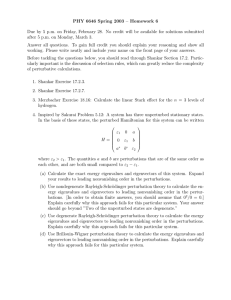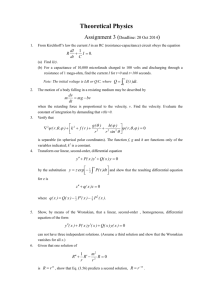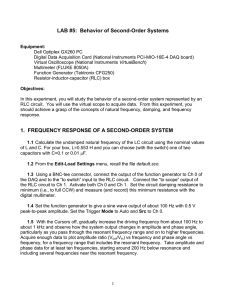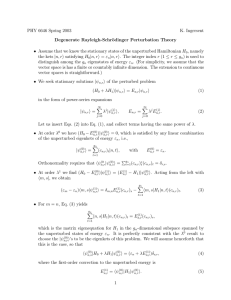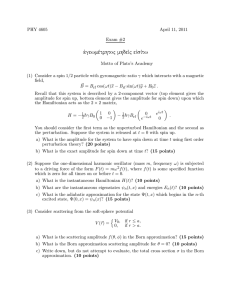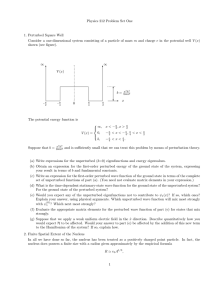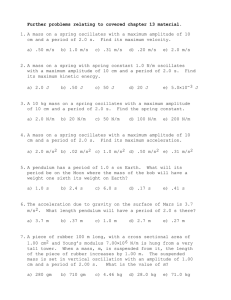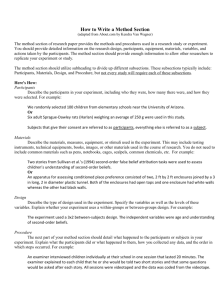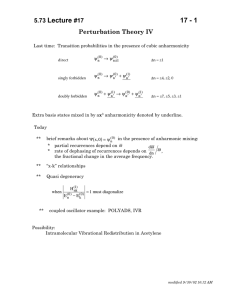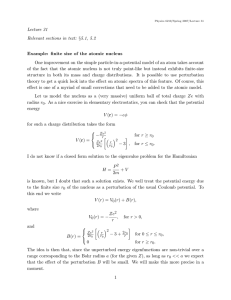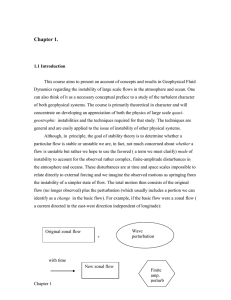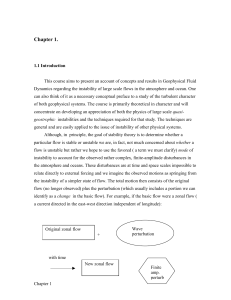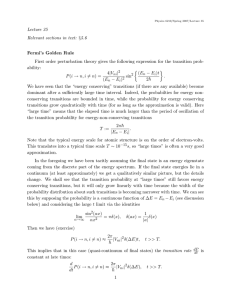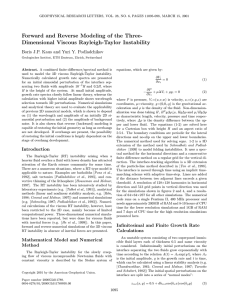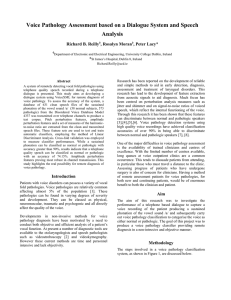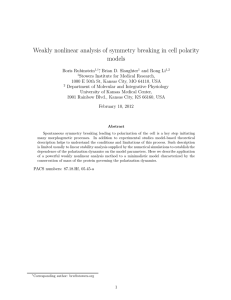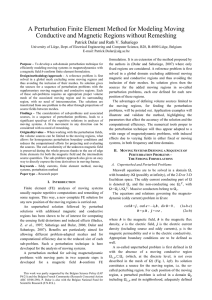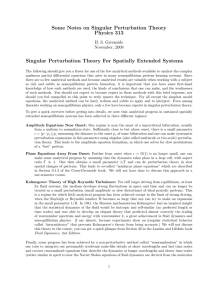PHY 6646 Spring 2003 – Homework 9
advertisement
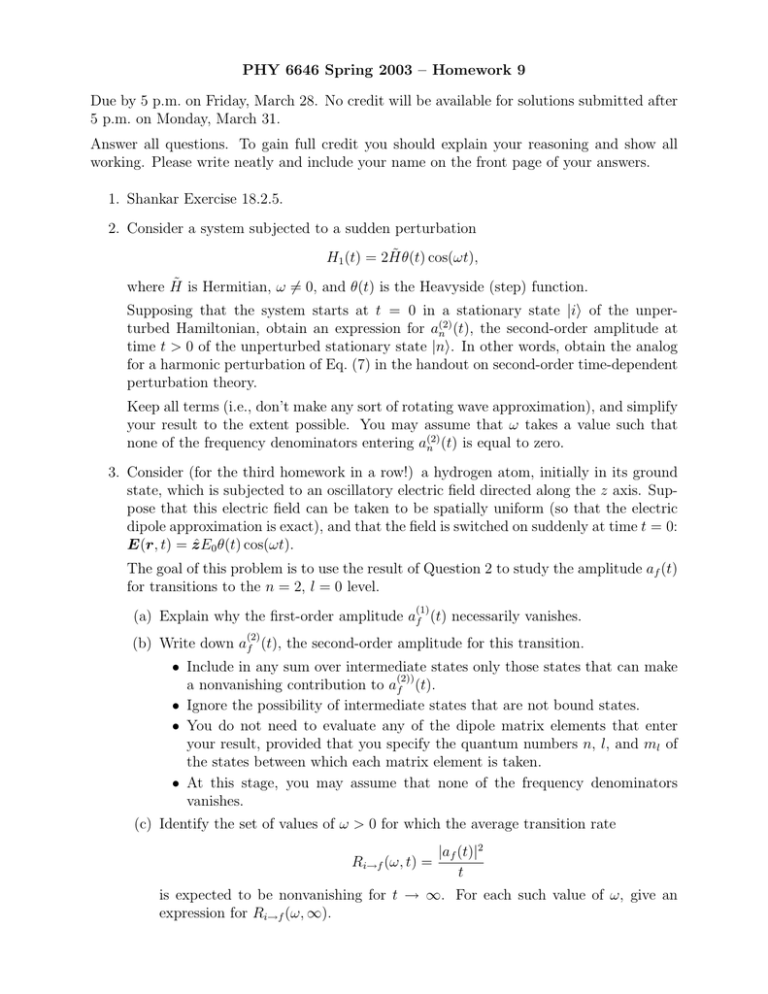
PHY 6646 Spring 2003 – Homework 9 Due by 5 p.m. on Friday, March 28. No credit will be available for solutions submitted after 5 p.m. on Monday, March 31. Answer all questions. To gain full credit you should explain your reasoning and show all working. Please write neatly and include your name on the front page of your answers. 1. Shankar Exercise 18.2.5. 2. Consider a system subjected to a sudden perturbation H1 (t) = 2H̃θ(t) cos(ωt), where H̃ is Hermitian, ω 6= 0, and θ(t) is the Heavyside (step) function. Supposing that the system starts at t = 0 in a stationary state |ii of the unperturbed Hamiltonian, obtain an expression for a(2) n (t), the second-order amplitude at time t > 0 of the unperturbed stationary state |ni. In other words, obtain the analog for a harmonic perturbation of Eq. (7) in the handout on second-order time-dependent perturbation theory. Keep all terms (i.e., don’t make any sort of rotating wave approximation), and simplify your result to the extent possible. You may assume that ω takes a value such that none of the frequency denominators entering a(2) n (t) is equal to zero. 3. Consider (for the third homework in a row!) a hydrogen atom, initially in its ground state, which is subjected to an oscillatory electric field directed along the z axis. Suppose that this electric field can be taken to be spatially uniform (so that the electric dipole approximation is exact), and that the field is switched on suddenly at time t = 0: E(r, t) = ẑE0 θ(t) cos(ωt). The goal of this problem is to use the result of Question 2 to study the amplitude af (t) for transitions to the n = 2, l = 0 level. (1) (a) Explain why the first-order amplitude af (t) necessarily vanishes. (2) (b) Write down af (t), the second-order amplitude for this transition. • Include in any sum over intermediate states only those states that can make (2)) a nonvanishing contribution to af (t). • Ignore the possibility of intermediate states that are not bound states. • You do not need to evaluate any of the dipole matrix elements that enter your result, provided that you specify the quantum numbers n, l, and ml of the states between which each matrix element is taken. • At this stage, you may assume that none of the frequency denominators vanishes. (c) Identify the set of values of ω > 0 for which the average transition rate Ri→f (ω, t) = |af (t)|2 t is expected to be nonvanishing for t → ∞. For each such value of ω, give an expression for Ri→f (ω, ∞). (d) What will be the qualitative effect on the results of the previous part if each excited level of hydrogen has a finite lifetime τn,l,ml ? (e) To quantify the effect of finite excited-state lifetimes, consider the transition that occurs for infinite lifetimes at a frequency h̄ω = 5 Ry/36. Find an expression for Ri→f (ω, t) for this transition, valid for long but finite times t.
